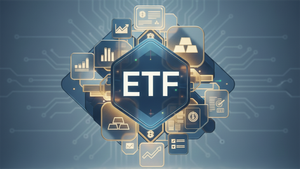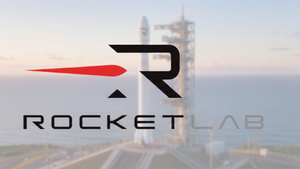
The year 2025 has etched itself into financial history as a testament to the stock market's extraordinary resilience. After a tumultuous April and May, dubbed the "Trump Slump," which saw significant market corrections sparked by aggressive new tariff policies, Wall Street staged a stunning comeback. By June, major indices had not only recovered all losses but surged to unprecedented all-time highs, confounding pundits and demonstrating a remarkable capacity to absorb and adapt to major policy shocks.
This rapid V-shaped recovery, following a period of intense volatility and widespread investor apprehension, highlights the powerful interplay of corporate adaptability, swift policy adjustments, and underlying economic strength. The market's ability to pivot from deep correction to record-breaking rallies in a matter of weeks offers crucial lessons on navigating political uncertainty and the enduring optimism that often underpins long-term growth.
The Tariff Tempest: What Happened and Why it Mattered
The "Trump Slump" commenced with an abrupt and impactful policy shift. On April 2, 2025, a day famously referred to by President Trump as "Liberation Day," his administration unveiled sweeping tariff policies. These included a universal 10% tariff on nearly all U.S. imports, effective April 5, with additional country-specific duties slated for various goods. This declaration of a national emergency concerning the trade deficit sent immediate shockwaves through global markets.
The market reaction was swift and brutal. On April 3, the Nasdaq Composite saw its steepest single-day decline since the COVID-19 pandemic, shedding 1,600 points. The S&P 500 plunged 4.84%, and the Dow Jones Industrial Average plummeted 1,679 points, a 3.98% drop. The selling intensified on April 4, with the Dow Jones diving another 2,231 points (5.5%), and the Nasdaq Composite (NDAQ) officially entering bear market territory, having fallen more than 20% from its December peak. By April 8, the S&P 500 (SPX) had endured a nearly 20% correction from its February 19 high, marking one of the worst starts to a presidential term for the index in a century. Investor fear was amplified by heightened geopolitical tensions and widespread uncertainty surrounding the new trade regime, prompting a broad withdrawal of capital.
The root cause of this market upheaval was the reintroduction and significant escalation of protectionist trade policies. From January to April 2025, the average applied U.S. tariff rate soared from 2.5% to an estimated 27%, reaching levels not seen in over a century. These extensive tariffs included a 50% duty on imported steel, aluminum, and copper, alongside a 25% tariff on cars from most nations, with duties on pharmaceuticals and semiconductors looming. President Trump articulated these "reciprocal tariffs" as a necessary response to perceived unfair trade practices by other nations. This broad-based imposition across nearly all economic sectors fueled widespread panic selling, further exacerbated by warnings from the Federal Reserve chairman about the likelihood of higher prices and slower economic growth. In retaliation, major trading partners such as China, Canada, and the European Union announced or implemented their own retaliatory tariffs, igniting fears of a full-blown global trade war. Despite the initial announcements, the effective tariff rate as of June 2025 was reportedly around 8%, with U.S. consumers absorbing approximately one-third of the costs—a "cost-sharing" dynamic that would later contribute to corporate resilience.
The market's recovery was as dramatic as its descent. A crucial turning point arrived on April 9, 2025, when the Trump administration announced a 90-day pause on most of the aggressive tariff increases. This sudden policy pivot ignited an immediate and powerful market rally. The S&P 500 surged an astounding 9.5% on that day alone, marking its third-best performance since 1940. Following further "walk-backs" on tariffs and the negotiation of initial trade agreements, the S&P 500 turned positive for the year by May 13, 2025. This upward momentum continued robustly through May and June, with the S&P 500 gaining 6.3% and 5.1% respectively, culminating in an impressive 10.9% gain for the second quarter. By June 27, 2025, the S&P 500, Nasdaq Composite, and Dow Jones Industrial Average (DJIA) all reached new all-time closing highs. The S&P 500 had ascended 13.63% year-to-date as of June 30, 2025, showcasing an unexpected and powerful rebound from the turbulent spring. This remarkable absorption of significant policy shocks was driven by corporate adaptability, prudent central bank actions, and a timely recalibration of trade policy. The underlying resilience was also buoyed by stronger-than-expected macroeconomic data, a robust first-quarter earnings season, and the anticipation of further tax cuts and potential interest rate adjustments, all contributing to a swift restoration of investor confidence.
The Unseen Battle: Winners and Losers in the Tariff Tug-of-War
The "Trump Slump" and subsequent recovery created a clear divide between market winners and losers, largely dictated by exposure to global supply chains, reliance on international trade, and the ability to pivot amidst policy uncertainty. Sectors heavily dependent on imported components and raw materials, particularly manufacturing and parts of technology, bore the brunt of the initial tariff onslaught.
Automotive giants such as General Motors (NYSE: GM), Ford (NYSE: F), and Tesla (NASDAQ: TSLA) faced immediate headwinds due to increased costs for foreign auto parts, raw materials, and critical components like lithium-ion batteries and AI chips. Similarly, auto part manufacturers like BorgWarner (NYSE: BWA) and Aptiv (NYSE: APTV) were impacted by their reliance on global semiconductor supply chains. Foreign automakers with significant U.S. sales, like Volvo (US OTC: VOLVY) and Ferrari (NYSE: RACE), also issued warnings about potential earnings reductions. Even innovative electric vehicle manufacturer Rivian (NASDAQ: RIVN) lowered delivery targets, citing trade regulations.
In the technology sector, while some mega-caps ultimately benefited from the AI boom, semiconductor and hardware manufacturers with extensive global supply chains, such as Nvidia (NASDAQ: NVDA) and AMD (NASDAQ: AMD), initially grappled with increased costs and potential revenue losses from export restrictions, particularly to key markets like China. Companies like Sony (NYSE: SONY) and Samsung (OTC: SSNLF) also faced challenges due to tariffs imposed on their respective countries of origin. The retail sector also felt significant pressure, as tariffs on imported consumer goods threatened higher prices and dampened consumer demand. Major importers like Target (NYSE: TGT) and Walmart (NYSE: WMT) expressed concerns about rising costs. Apparel retailers such as Abercrombie & Fitch (NYSE: ANF) and Macy's (NYSE: M), with their high exposure to imported goods, lowered profit outlooks, as did toy manufacturer Mattel (NASDAQ: MAT) and beverage giant Diageo (NYSE: DEO).
Conversely, domestically focused companies and those spearheading reshoring initiatives emerged as relative winners. U.S. steel producers like Nucor Corporation (NYSE: NUE) continued to benefit from protective tariffs on imported steel. Companies offering alternatives to tariff-affected materials, such as Trex Company (NYSE: TREX) in composite decking, also found favorable market conditions. The defense and aerospace sector, exemplified by companies like Carpenter Technology Corporation (NYSE: CRS), continued its robust performance, largely insulated from trade disputes. The push for domestic semiconductor manufacturing also boosted Intel (NASDAQ: INTC), which aimed to become the leading U.S. chipmaker. Smaller, domestically oriented companies, often less exposed to international trade, like Waste Connections (NYSE: WCN) and HealthEquity (NASDAQ: HQY), also showed resilience. Crucially, the accelerating demand for Artificial Intelligence (AI) proved to be a powerful counteracting force. Mega-cap technology companies with deep AI integration, including Microsoft (NASDAQ: MSFT), Apple (NASDAQ: AAPL), Amazon (NASDAQ: AMZN), and Alphabet (NASDAQ: GOOGL), leveraged their AI advancements across cloud platforms and product offerings, fueling significant growth. Specialized AI firms like Palantir Technologies (NYSE: PLTR) also saw substantial appreciation as the broader AI market expanded. Defensive sectors such as utilities (represented by the Utilities Select Sector SPDR Fund (NYSE Arca: XLU)), consumer staples (like the Consumer Staples Select Sector SPDR Fund (NYSE Arca: XLP)), and healthcare (including Eli Lilly and Company (NYSE: LLY) and UnitedHealth Group (NYSE: UNH)), also provided stability and attractive returns as investors sought havens from volatility.
Rethinking Globalism: Industry Impact and Broader Implications
The dramatic market fluctuations of Spring 2025, driven by the re-emergence of aggressive protectionist trade policies, forced a profound re-evaluation of global supply chains and international trade dependencies. This event underscored a broader industry trend towards de-risking supply chains, encouraging reshoring or nearshoring efforts, and diversifying manufacturing bases away from over-reliance on single regions. Companies across all sectors are now more acutely aware of the fragility of globally extended production networks in the face of sudden policy shifts, leading to increased investment in domestic production capabilities and more resilient, geographically dispersed sourcing strategies. The initial tariffs, though later softened, served as a potent catalyst for these strategic shifts, accelerating a trend that had already begun to take shape in previous years.
The ripple effects of the tariff episode extended deeply into competitive landscapes and partner relationships. Industries highly integrated into global trade, such as automotive, electronics, and various consumer goods, saw increased competitive pressure on margins as import costs rose. This prompted a renewed focus on operational efficiencies and, in many cases, a passing on of costs to consumers, albeit often shared with producers to mitigate demand destruction. Trade partners, initially hit by retaliatory tariffs, were compelled to seek new markets and forge alternative alliances, potentially altering long-standing geopolitical and economic relationships. The event also highlighted the critical role of government policy in shaping market outcomes, emphasizing that political will, as much as economic fundamentals, can drive significant market movements. This realization may lead to increased corporate lobbying efforts aimed at influencing trade policy and a greater focus on political risk analysis within investment strategies.
From a regulatory and policy standpoint, the "Trump Slump" demonstrated the immense market power wielded by executive actions on trade. While the swift reversal of some tariff policies was instrumental in the market's recovery, the initial imposition highlighted the lack of predictability and the potential for rapid, broad-based economic disruption from unilateral trade measures. This could spur calls for greater congressional oversight on trade policy or international efforts to establish clearer, more stable frameworks for global commerce. Historically, markets have often reacted sharply to trade tensions, with precedents from various trade disputes showing similar patterns of initial panic followed by adaptation or resolution. However, the speed and scale of the 2025 event, coupled with the rapid recovery driven by both policy reversal and underlying economic strengths like the AI boom, present a unique case study in market resilience, suggesting a more sophisticated and adaptive market mechanism at play than in previous eras.
The Horizon Ahead: What Comes Next
The remarkable market recovery of mid-2025 suggests several short-term and long-term possibilities for the financial landscape. In the short term, markets will likely remain highly attuned to any further pronouncements or shifts in trade policy. The administration's demonstrated willingness to both impose and then pause tariffs creates an environment of cautious optimism, where investors will weigh potential policy risks against strong corporate fundamentals and technological advancements. Any renewed threats of widespread tariffs could trigger further volatility, though the swift recovery previously observed may temper the depth of such reactions. The focus will be on the concrete outcomes of ongoing trade negotiations and the sustained adaptability of companies in navigating a potentially unpredictable global trade environment.
In the long term, the events of 2025 are likely to accelerate strategic pivots across industries. Companies will continue to invest in supply chain diversification, automation, and domestic production to build greater resilience against future trade shocks. This could lead to a gradual but significant reconfiguration of global manufacturing and logistics, creating new market opportunities for domestic suppliers and advanced manufacturing technologies. Furthermore, the pervasive influence of Artificial Intelligence (AI) is expected to continue its trajectory, acting as a powerful engine for productivity gains and innovation that can help offset the economic drag of trade barriers. The "One Big Beautiful Bill Act," which extended 2017 tax cuts, along with anticipated Federal Reserve interest rate cuts in early 2026, also provide underlying economic tailwinds that could support continued market growth, even in the face of ongoing geopolitical complexities.
Potential scenarios range from a sustained period of robust growth, assuming trade policies stabilize and AI innovation continues unabated, to renewed volatility if trade tensions re-escalate or if global economic growth falters. Market opportunities may emerge in sectors that benefit from reshoring, automation, and AI adoption, as well as in defensive sectors that offer stability during uncertain times. Challenges could include continued inflationary pressures from higher import costs, potential labor market shifts due to automation, and the inherent unpredictability of a policy-driven market. Investors should anticipate an ongoing re-evaluation of risk, with a premium placed on companies demonstrating strong balance sheets, adaptable business models, and a clear strategy for navigating a complex global economy.
Resilience Redefined: The Market's Enduring Strength
The "Trump Slump" of 2025 stands as a compelling testament to the modern stock market's extraordinary capacity for resilience and adaptation. What began as a sharp, policy-induced correction in April and May, fueled by sweeping tariff announcements, quickly transformed into a robust recovery, propelling major indices to new all-time highs by June. This V-shaped rebound underscores several key takeaways: the market's underlying strength, driven by corporate adaptability and technological advancements, particularly in AI; the critical role of central bank and policy responses in mitigating extreme volatility; and the often-swift investor re-evaluation once policy uncertainties begin to clarify.
Moving forward, the market is likely to remain dynamic, characterized by an ongoing tension between geopolitical uncertainties and powerful fundamental drivers. The experience of 2025 has cemented the importance of diversified and resilient supply chains, pushing industries toward greater domestic integration and technological innovation. The AI revolution continues to act as a significant tailwind, offering productivity gains and new growth avenues that can counterbalance external pressures. While trade policies will remain a focal point, the market has demonstrated its ability to digest and overcome such shocks, especially when policy adjustments provide clearer pathways for businesses.
In conclusion, the events of spring 2025 have redefined what it means for the stock market to be resilient. It's not merely about weathering a storm, but about demonstrating a rapid capacity for recovery and adaptation in the face of significant, unexpected headwinds. Investors should continue to watch for clarity in trade policy, the ongoing impact of AI on corporate earnings, and the Federal Reserve's monetary stance. The lessons learned from the "Trump Slump" – particularly the market's powerful ability to rebound from policy-driven corrections – will undoubtedly shape investment strategies and corporate decision-making for years to come, emphasizing agility, strategic diversification, and a deep understanding of both economic fundamentals and the political landscape.




